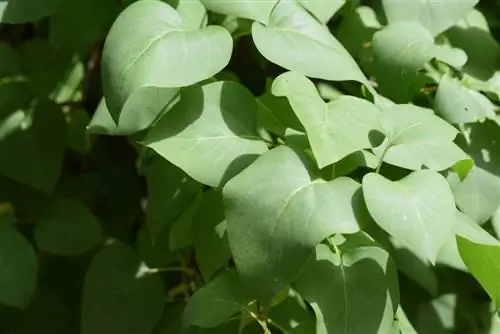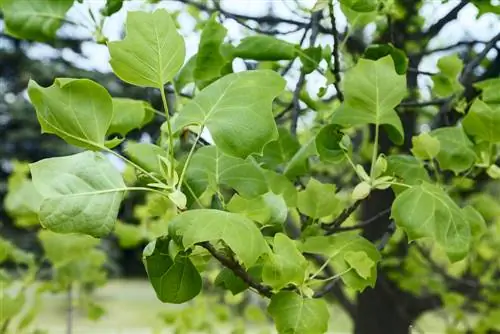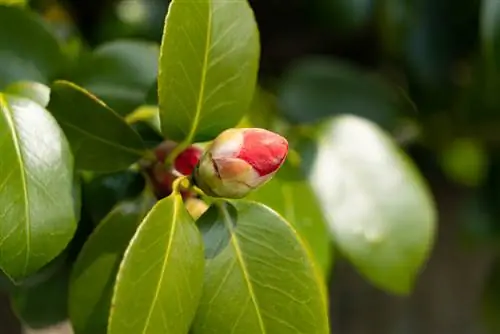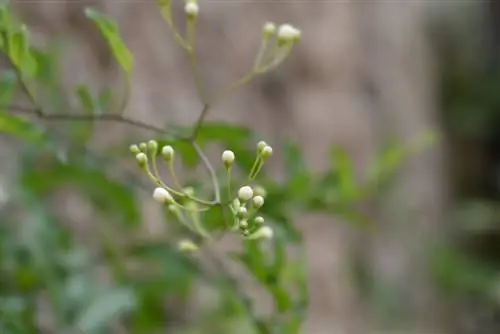- Author admin [email protected].
- Public 2023-12-16 16:46.
- Last modified 2025-06-01 06:02.
The main reason for planting lilacs is their captivating blooms, which unfortunately only last for a short time. Nevertheless, the flowering shrub is known and loved for its lush flowers that exude an intense scent - it is all the more noticeable when they are absent. We would like to introduce you to the most common causes for this actually atypical behavior.
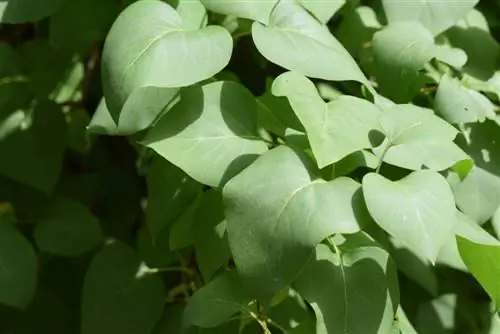
Why isn't my lilac blooming?
If a lilac does not bloom, an environment that is too dark, unsuitable soil, incorrect pruning, incorrect care, disturbances caused by fungal infections or root rot can be responsible. To promote flower growth, location, soil conditions, pruning and care should be checked and optimized.
Be patient with young lilacs - or plant noble lilacs
If the recently planted lilac still has no flowers, there are completely natural reasons and you just need a little patience: wild lilacs in particular and other rootless varieties need up to three years after planting before they set flower buds and thus a Flowering is expected. For some specimens it can take even longer; after all, there are real late bloomers in the plant kingdom too. As long as the young plant grows and produces new, strong shoots every year, everything is fine. However, if you can't go without the lilac blossoms for that long, you should plant noble lilacs. This develops the first flower-bearing shoots on very young plants.
Causes of missing flowers
If the lack of flowering is not an option, for example because the lilac in question has always bloomed very reliably, one of the following reasons may be possible.
Inappropriate location
Lilac needs a lot of sun to bloom lushly - the more light the shrub receives, the more flowers it produces. If, on the other hand, there is no sun, the otherwise typical splendor in spring is also absent. This applies not only if you have placed the lilac in a location that is too shady, but also in a spring that is too dark and possibly rainy.
Unsuitable soil
The soil can also be the cause of the lack of flowers, for example because it is too compacted and the roots cannot spread properly. This form of flowerlessness often occurs in the gardens of newly built houses because the construction machinery has heavily compacted the soil there. For lilacs, choose a loose, well-drained and slightly alkaline to neutral soil; if necessary, simply add a lot of lime.
Incorrect pruning
If at all, you should always cut lilacs only after they have bloomed, as if you cut them later in autumn or spring you run the risk of cutting off the flower shoots. Lilac always blooms on shoots from at least the previous year.
Incorrect care (especially too little or too much fertilization)
It would seem completely logical to most people that flowering will be very small or even non-existent if there is insufficient nutrient supply. But over-fertilization can also have this effect, which is why you should always follow the manufacturer's instructions regarding dosage.
Fungal infection (especially lilac disease)
Lilac is very susceptible to a fungal infection. If this is not treated, the flower may also fail - simply because the bush is too busy defending itself against the disease. If you cut an infected bush back to the he althy wood, you can enjoy lilac blossoms again in about two years.
Tip
Root rot caused by waterlogging can also ensure that the lilac remains without flowers. In this case, however, only clearing the affected bush helps.

